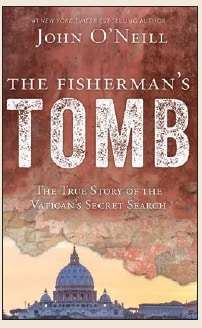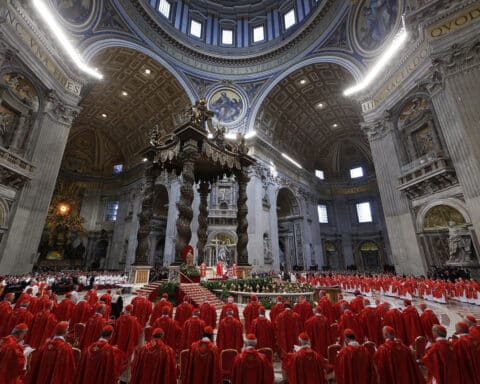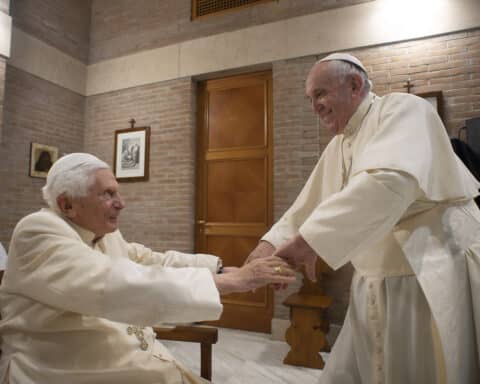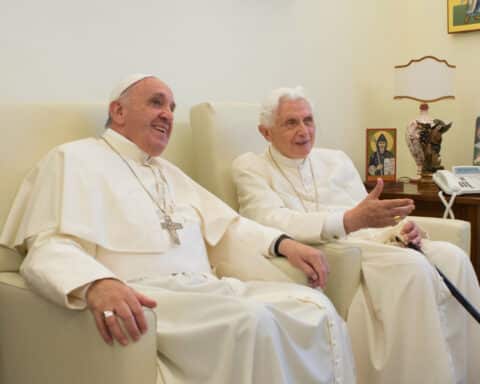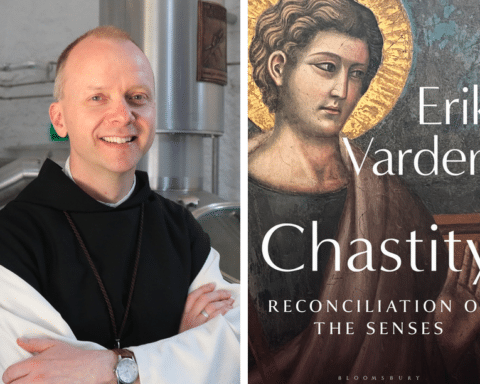John O’Neill is the unlikely author of an unlikely story.
O’Neill, a 1967 graduate of the U.S. Naval Academy and an oil and gas litigator from Houston, swore off writing after publishing “Unfit for Command: Swift Boat Veterans Speak Out Against John Kerry” (Regnery Publishing, $27.95). But a visit to the Vatican intrigued him so much that he embarked on “The Fisherman’s Tomb: The True Story of the Vatican’s Secret Search” (OSV, $21.95), an account of the clandestine quest to find the bones of St. Peter. It’s a tale that recalls “Indiana Jones” or “The Da Vinci Code,” complete with mistakes, red herrings and bureaucratic back-stabbing, redeemed by a large measure of faith — and unlike those works of fiction, it’s all true.
Our Sunday Visitor: How did you come to write this book?
John O’Neill: In 2007, I toured the then-underground of the Vatican, and I saw the place where St. Peter’s bones had been buried. I became really interested as a result of that, and I then spoke to the Strake family here in Houston — their father, George Strake Sr., was deeply involved in financing the entire project.
OSV: Did you already know the Strakes when you learned of their involvement?
| Info on ‘The Fisherman’s Tomb’ |
|---|
|
Publisher: Our Sunday Visitor, 2018
Price: $21.95
John O’Neill is a lawyer and a No. 1 New York Times bestselling author. He has spent much of his life visiting and researching early Christian sites. A former law clerk to Supreme Court Chief Justice William Rehnquist, he is a senior partner at a large international law firm.
|
O’Neill: I’ve been friends with the Strakes for many years. I’m from Houston. … George Strake Sr. is very, very famous in the oil and gas industry because of his discovery of the third largest oil field ever discovered in the United States. It was an oil field so massive that the production from that field was equal to all the oil produced from all the wells in the United States, Russia and Saudi Arabia in two-month period. You can imagine what an immense field it was that he discovered.
He gave his money away secretly. It was known that he gave it secretly to charities, gave it all away. That was sort of legendary, but no one knew exactly … what the background was.
OSV: Was it difficult to get the Strakes to share the story of their father’s involvement in this tale?
O’Neill: He was a biblical giver. He gave it all away without ever telling anyone what he was doing or claiming any credit for it. The example of what he did is so important, and the underlying story of Peter’s tomb and what was found there is so important, that after so many years, it was more important than any anonymity. They were very forthcoming in sharing the story.
George Strake not only participated in financing this huge project under the Vatican, he also financed and assisted Pope Pius XII to rescue and assist the Jews in Italy in the Second World War, and in starting small Catholic churches in communist areas all over Italy immediately after World War II to prevent a communist takeover of Italy.
OSV: What do you think of Pius XII’s decision to start this project? It was risky, especially when the Vatican itself was in a precarious situation during World War II.
O’Neill: It was incredibly brave. In the 1500s, when the second St. Peter’s was built, the people building it dropped shafts down under the Vatican to see if they could locate Peter. Instead of finding Peter, they found a statue of a half-clothed Roman man, who said “Bring me wine and young girls for tomorrow you will be like me.” The priests were just appalled when they saw that, so they threw it away and sealed it up. They were afraid that the Vatican itself had been built on a pagan footing.
Pius had the courage to believe it wasn’t that way, and had the courage to believe it without a great deal of evidence, as an act of faith.
OSV: How did this affect your faith?
O’Neill: I was affected profoundly by the things I learned: the generosity of the Strakes, giving away everything sacrificially while George Strake was alive; the story of Margherita Guarducci, the little woman with the big heart who came in and actually solved this mystery — a great archeologist, with her story of continuing year after year, crusading against all odds, to uncover this. It’s a tremendous and inspiring story of courage.
Of course, Peter himself! Peter actually staying in Rome and being crucified, crucified upside down as Tradition relates.
Most inspiring of all are the early Christian inscriptions. They are the earliest Christian inscriptions in the world, from the first and second centuries, that reflect Christian faith and doctrine in exactly the same way that you and I believe, all those centuries ago, and written under threat of persecution and death. The most inspiring thing in my life is to look at the inscriptions surrounding Peter’s grave left in the first, second and third centuries by those Christians and decoded by Margherita Guarducci.
OSV: How unlikely was it that this cast of people would come together in an effort like this?
O’Neill: It’s all impossible — impossible people in an impossible story. George Strake was an orphan from an impoverished family. When he drilled for oil down here, he drilled in an area where everybody knew oil could never be found. He drilled unsuccessfully at first, gambled his last dollar, and he hit the third largest oil field in the history of the United States, almost a billion barrels, and then, to give all the money away secretly, as it came in, while he was alive and it was possible. …
Guarducci was an agnostic at the time she was recruited by Pope Pius and later Msgr. (Giovanni) Montini, who became Pope Paul VI. She was a very unlikely person to bring in, and yet without her, they never would have found the inscriptions or Peter’s actual relics. She was so inspired by the inscriptions she saw that for a period of almost 50 years, she pursued this discovery — first the decoding of the inscriptions, then later fighting opposition among the secularists and even among apparatchiks in the Vatican to make this discovery known.
She was a little, tiny woman, maybe 4-foot-11, maybe she could crack 5 feet in high heels, which she never wore, very simply dressed, no political skill, but she was probably the greatest archeological genius of the 20th century. What she found under the Vatican profoundly changed her. Before going to the Vatican, she’d become very, very famous for her discovery of what’s called the Great Epigraph.
She already had made her name before she came to the Vatican. To have her so profoundly changed by what she saw is an inspiring story of faith itself.
Her critics accused her of operating by faith, not science. The truth is, her science made her faith. What she saw turned Margherita Guarducci into a great Christian and Catholic believer.
There’s the unlikeliness that Peter’s relics would survive over 2,000 years — it’s inconceivable. Or that those little inscriptions on the wall about him would make it through the centuries, you know; it’s almost impossible.
You could write this as a fictional story, and it would be rejected as unbelievable.
OSV: And after all that, we found Peter’s bones right where Jesus said they’d be, under the Church.
O’Neill: It is amazing. For our whole lives, we’ve all taken the statement that “upon this rock I will build my Church” as symbolic, as a statement that Peter was the leader of the apostles and the leader of the Christian church, but it wasn’t just symbolic. Christ was apparently not speaking only symbolically but literally, that the Church would one day be built directly on Peter’s bones in Rome, under the Vatican.
In 2013, Pope Francis presented those relics in a large gathering in St. Peter’s Square in Rome and said, “Behold Peter’s bones,” and he placed the entire weight of the Catholic Church behind Guarducci’s find so many years before.
That was a brave act by Pope Francis, and it was truly dictated by scientific results.
OSV: What do you hope people will take away from this book?
O’Neill: The oldest thing I learned in elementary school is that our purpose is to know, love and serve God. This is a book that will help anybody to know and understand God, because you’re actually looking at the inscriptions made by people who are virtually physical witnesses of the presence of Jesus on earth.
The second thing that it does is it gives you the ability to see physical relics from the first and second centuries. With the wave of secularism that is overwhelming the world, people want to treat people like Peter as though they never existed, as though it’s all a fairy tale or Santa Claus story. Just go look under the Vatican. It’s not a Santa Claus story. They really did exist. Peter really was killed in Rome, and there were a lot of really brave people who prayed to him, who sacrificed their lives to transmit this great faith down to us in the 21st century.
Michelle Martin writes from Illinois.

